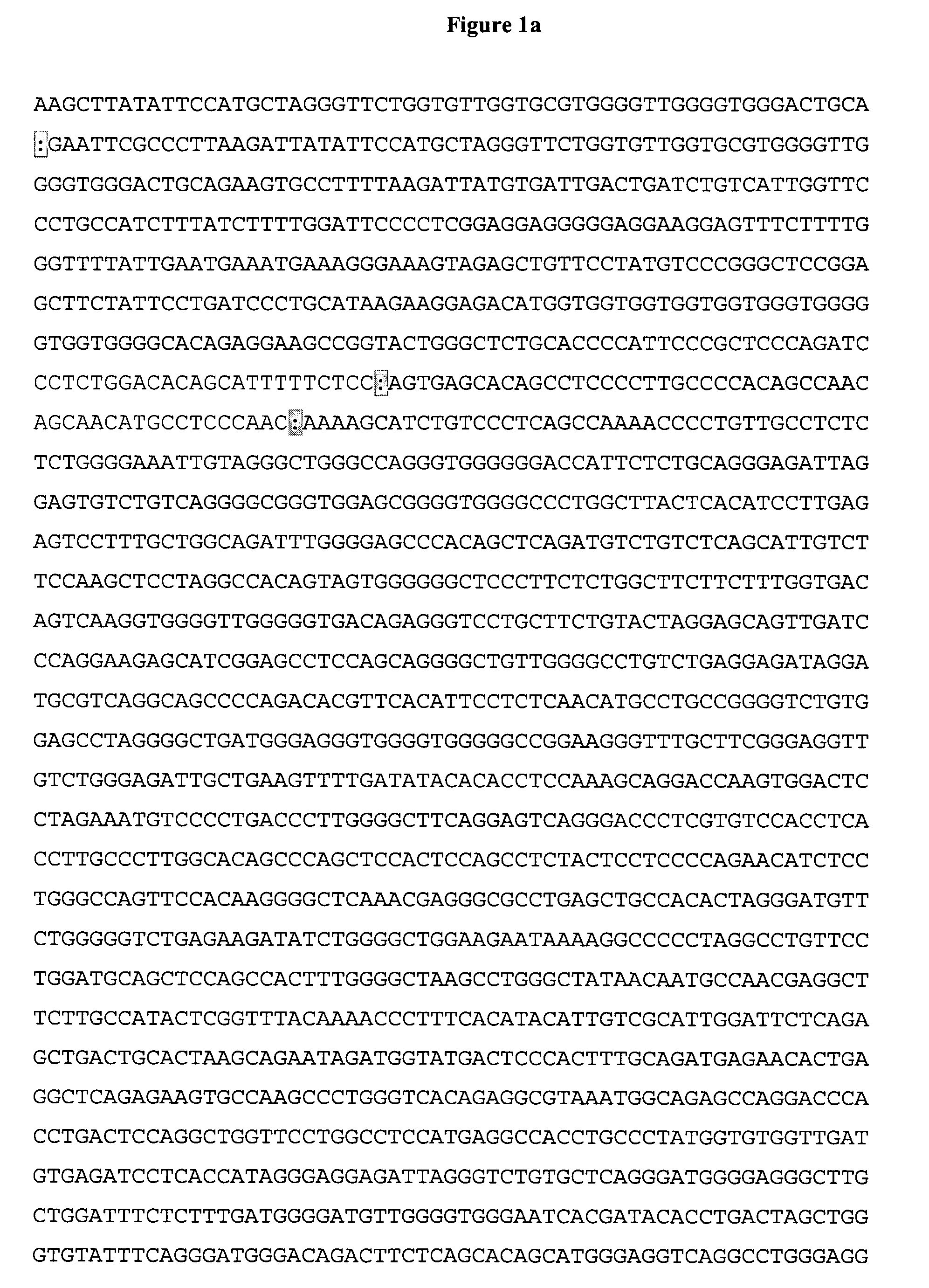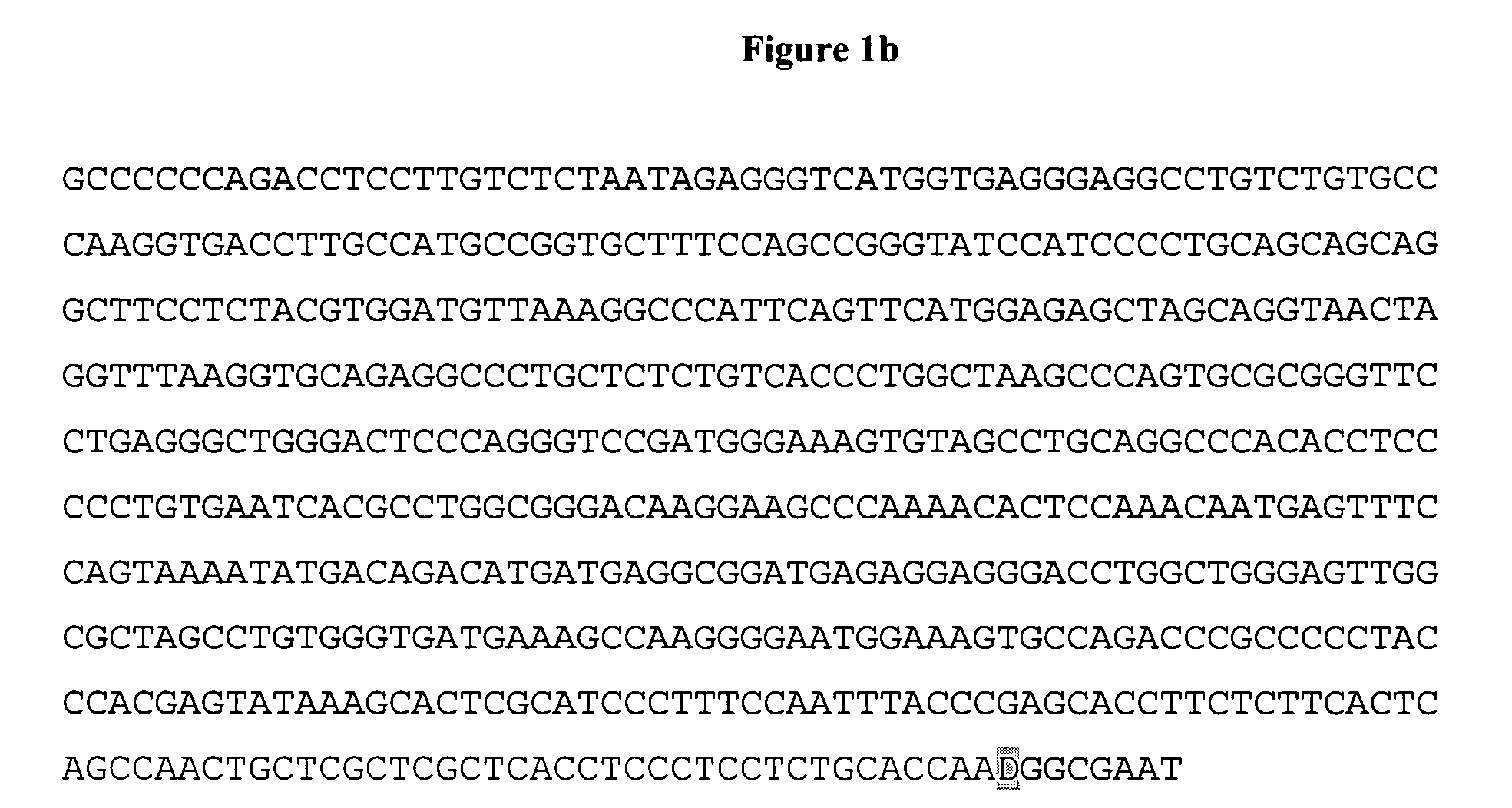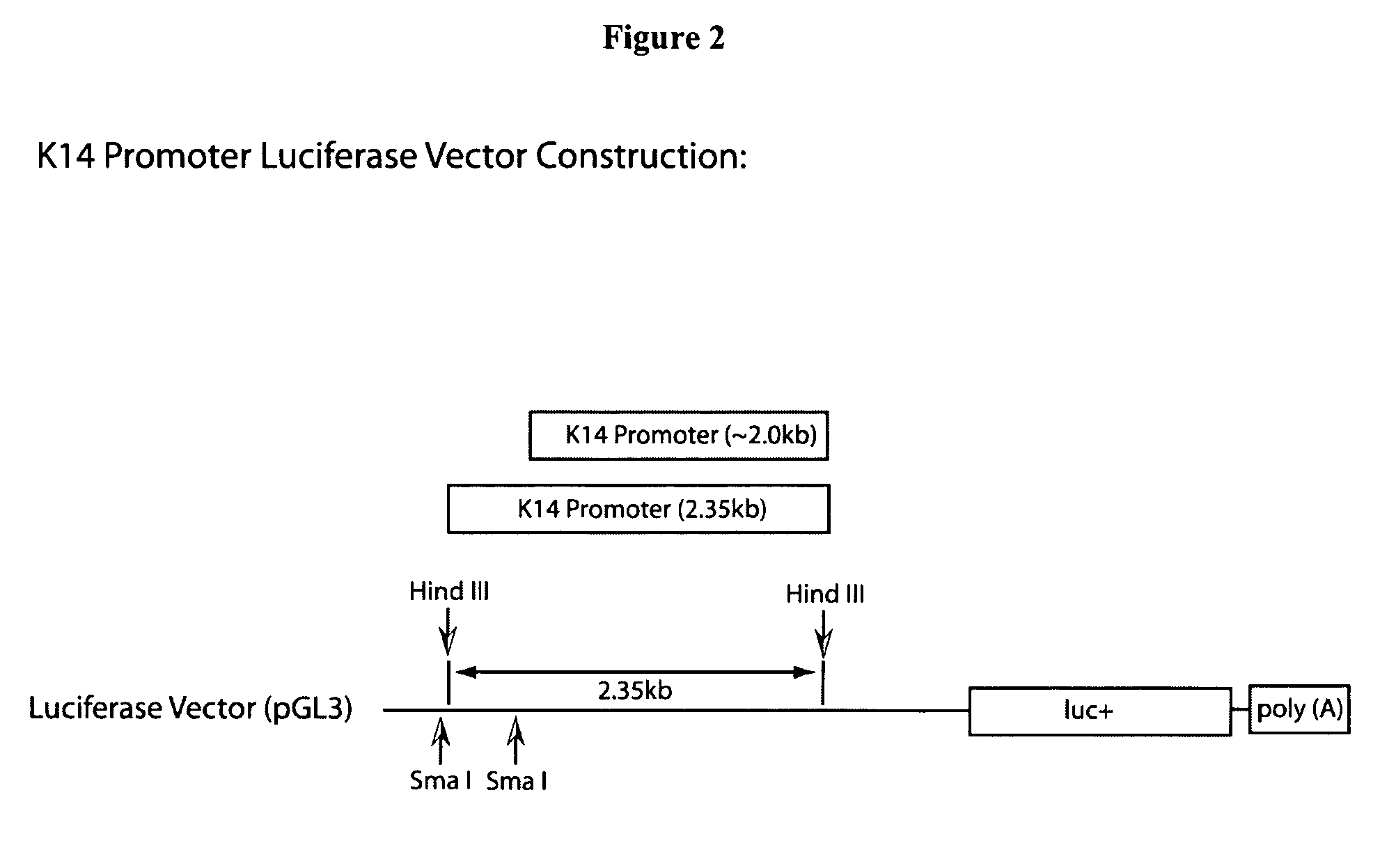Human skin equivalents expressing exogenous polypeptides
a human skin equivalent and exogenous polypeptide technology, applied in the field of wound closure compositions, can solve the problems of force changes in an individual's life, prolonged recovery time, loss of function, etc., and achieve the effects of prolonging proliferative capacity, and increasing pluripotency or multipotency
- Summary
- Abstract
- Description
- Claims
- Application Information
AI Technical Summary
Benefits of technology
Problems solved by technology
Method used
Image
Examples
example 1
Keratin 14 Promoter Cloning and Characterization
[0164] This Example describes the method used to isolate, clone and characterize the K14 promoter DNA. Primer sequences were designed based on the published K14 Promoter sequence available at Genbank (Genbank Accession #U11076). In order to amplify the 2.35 kb full length K14 promoter sequence, the following PCR primers were used:
Fwd5′-AAGCTTATATTCCATGCTAGGGTTCTG-3′(ST080)(SEQ ID NO:1)Rev5′-GGTGCAGAGGAGGGAGGTGAGCGA-3′(ST081)(SEQ ID NO:2)
[0165] Human genomic DNA (Promega) was amplified with these primers using Amplitaq DNA polymerase (Promega). Following a denaturation at 95° C. for 4 minutes, samples were subjected to the following for 30 cycles: denaturation at 95° C. for 1 minute, annealing conditions at 58° C. for 1 minute, extension at 72° C. for 3 minutes. A final extension at 72° C. for 7 minutes was followed by a 4° C. hold. The expected PCR product of 2.35 kb was observed. This PCR product was gel purified and subsequently u...
example 2
KGF-2 Cloning and Characterization
[0170] This Example describes the isolation, cloning and characterization of KGF-2. Primer sequences were designed based on the published KGF-2 sequence available at Genbank. In order to amplify the 627 bp full length KGF-2 sequence, the following PCR primer sequences (BamH I-EcoR V) were used:
Fwd5′-CGCGGATCCGCGATGTGGAAATGGATACTG-3′(ST127)(SEQ ID NO:4)Rev5′-GGGATATCCTATGAGTGTACCACCATTGGA-3′(ST128)(SEQ ID NO:5)
[0171] Pfu Turbo DNA Polymerase (Stratagene) was used to minimize the risk of PCR induced errors. Human Universal QUICK-Clone cDNA (CLONTECH) was used as the template for PCR amplification of the full length KGF-2 cDNA. Following a denaturation at 94° C. for 4 minutes, samples were subjected to the following for 30 cycles: denaturation at 94° C. for 30 seconds, annealing conditions at 51° C. for 30 seconds, extension at 72° C. for 1 minute. A final extension at 72° C. for 7 minutes was followed by a 4° C. Hold. The expected PCR product of 62...
example 3
Mammalian Expression Vector Design
[0179] This Example presents a mammalian expression vector utilized in the present invention. The vector is described in FIG. 3 and comprises the following elements: K14 promoter (2.35 kb) / KGF-2 cDNA (627 bp) / globin intron & poly(A) (1.165 kb) / pUB-Bsd (4.245 kb).
PUM
| Property | Measurement | Unit |
|---|---|---|
| diameter | aaaaa | aaaaa |
| concentration | aaaaa | aaaaa |
| concentration | aaaaa | aaaaa |
Abstract
Description
Claims
Application Information
 Login to View More
Login to View More - R&D
- Intellectual Property
- Life Sciences
- Materials
- Tech Scout
- Unparalleled Data Quality
- Higher Quality Content
- 60% Fewer Hallucinations
Browse by: Latest US Patents, China's latest patents, Technical Efficacy Thesaurus, Application Domain, Technology Topic, Popular Technical Reports.
© 2025 PatSnap. All rights reserved.Legal|Privacy policy|Modern Slavery Act Transparency Statement|Sitemap|About US| Contact US: help@patsnap.com



